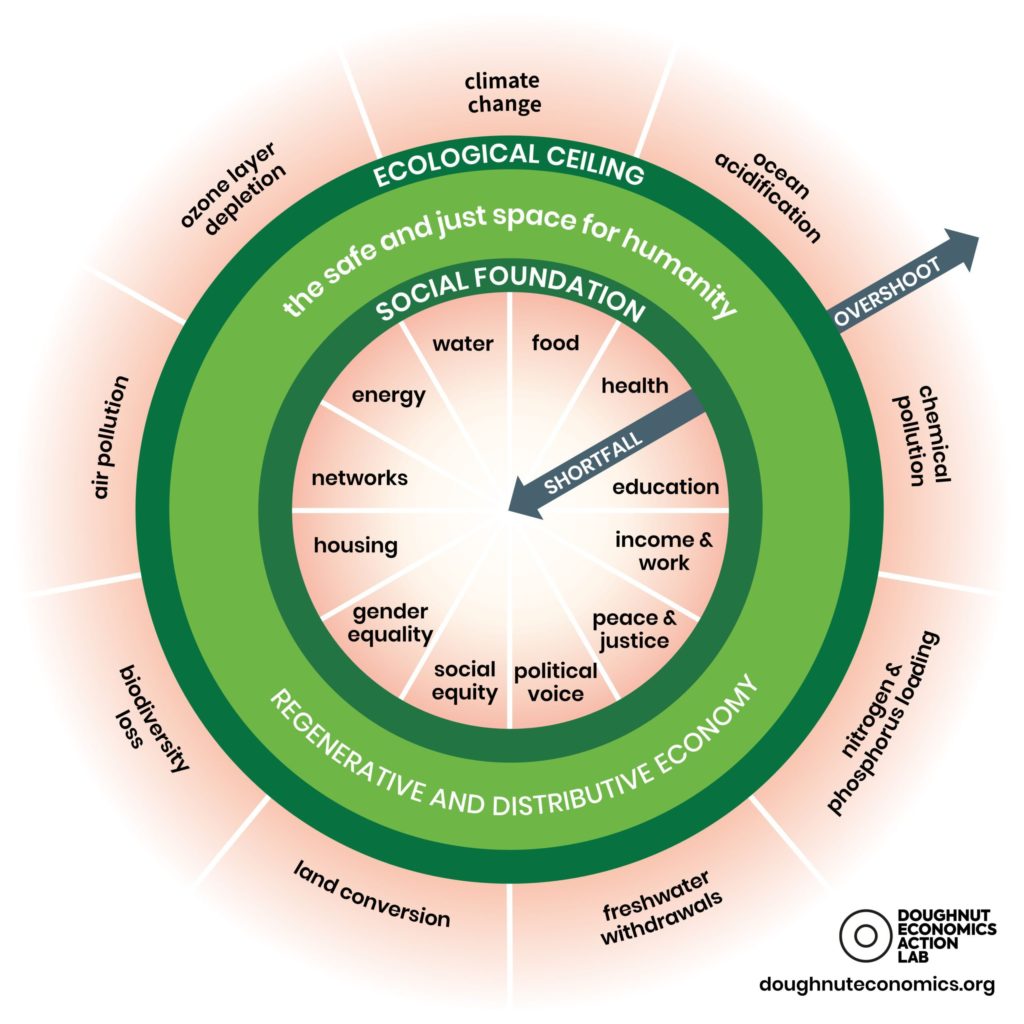Doughnut Economics
This post may contain affiliate links which means we may receive a commission for purchases made through links. We will only recommend products that we have personally used! Learn more on our Private Policy page.
What on Earth is the Doughnut?…
As sustainability leaders continue to strive for environmental stability, income equality and social justice, traditional economic models have been under scrutiny for failing to adequately address the world’s most pressing challenges.
In response, a revolutionary concept known as ‘Doughnut Economics’ has been created which offers a fresh perspective on realistically balancing the needs of people with the limitations of our planet.
The doughnut economics model was created by Oxford Economist, Kate Raworth in her book ‘Doughnut economics: seven ways to think like a 21st-century economist’, with the aim of creating a regenerative economy that’s beneficial and realistic.
The sustainability model is split into three key areas:
• Social foundation
• The safe and just space for humanity
• Ecological ceiling

The inner ring of the doughnut represents the basic human needs that everyone requires, including water, food, health, education, income and work, peace and justice, political voice, social equity, gender equality, housing, networks, and energy.
The outer ring shows the boundaries which humanity must not exceed in order to remain sustainable. This includes elements such as climate change, ocean acidification, chemical pollution, nitrogen and phosphorus loading, freshwater withdrawals, land conservation, biodiversity loss, air pollution, and ozone layer depletion.